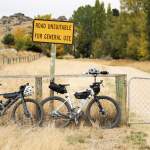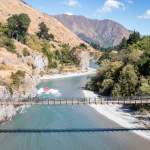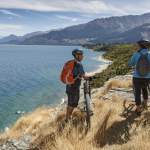
An Unpaved Paradise
Building the Otago Great Rides
Otago is New Zealand’s spiritual home of bikepacking and gravel riding.
Down here, we’ve been gravel biking since before it was even a thing…
- photography by Geoff Marks, Will Nelson & Tim Bardsley-Smith
In 1970 Joni Mitchell famously sang that “they paved paradise, put up a parking lot”.
Otago is quite the opposite.
It’s an unpaved paradise for cyclists, but it does offer the odd swinging hot spot - especially if pinot noir or craft beer is your thing.
Oh, and kilometre, after kilometre of glorious gravel trails...
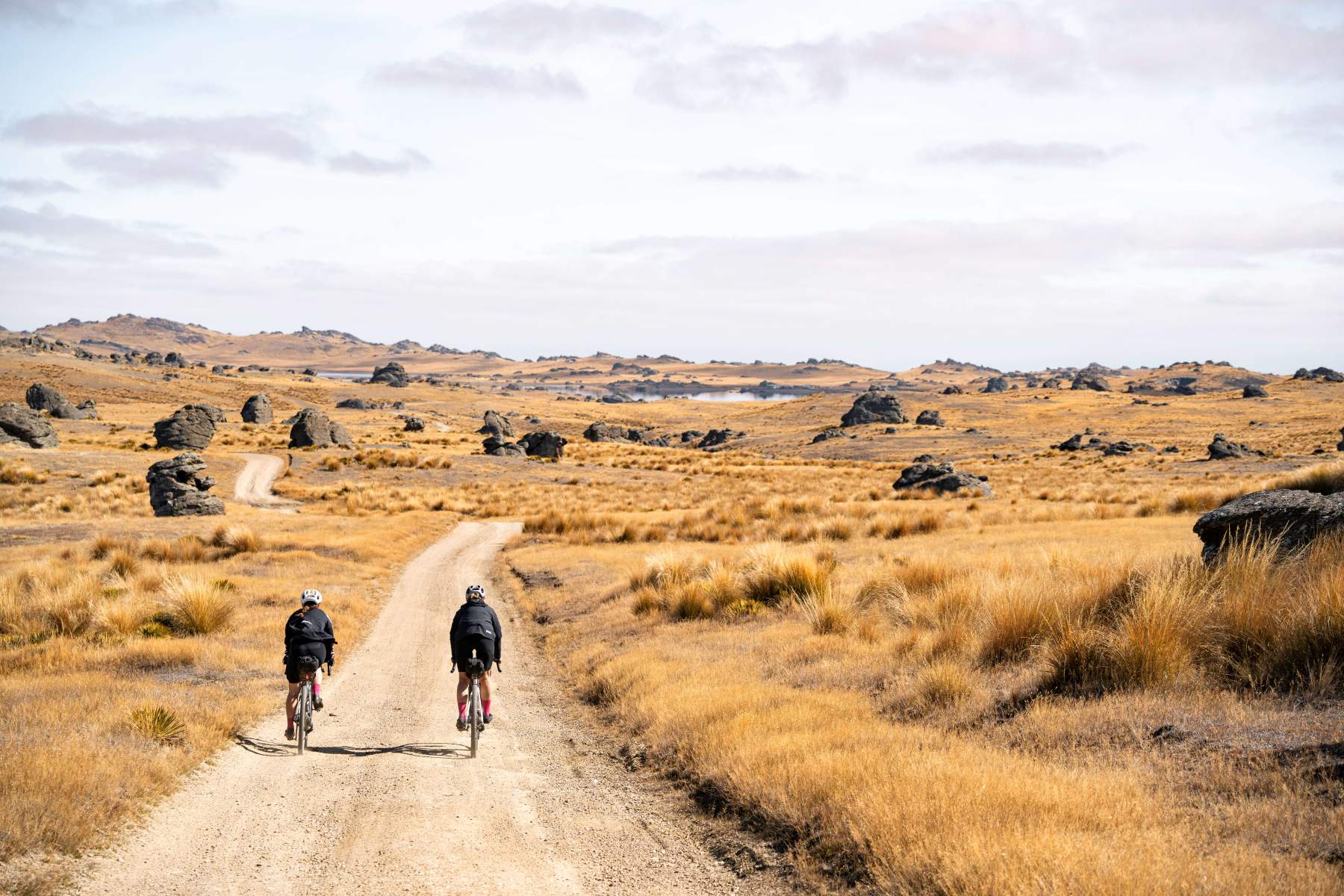
Otago is an unpaved paradise with kilometre, after kilometre of gravel roads and trails to explore [photo: Riley Mclay].
In the beginning...
If one trail can lay claim to starting New Zealand’s modern-day love affair with cycling, it’s the iconic Otago Central Rail Trail.
Launched in 2000, it was the country’s very first Great Ride, blazing a path for what would eventually become Ngā Haerenga – the New Zealand Cycle Trails – a full decade later.
The Rail Trail was borne out of tough times. Back in the 1990s, the rural communities of Central Otago were doing it tough. A downturn in farming meant small towns were losing shops, garages, post offices and even schools.
When the old railway line between Middlemarch and Clyde was officially decommissioned, the Department of Conservation in partnership with a newly formed trust set up by members of the Central Otago community took a bold step. They led a visionary project to transform the disused 152km rail corridor into a dedicated trail for cycling, walking, and horse riding.
Daphne Hull was one of the original members of the Otago Central Rail Trail Trust and is still a trustee to this day. “I remember the first meeting in March 1994 where it was made quite clear by the Chairman that there would be no payments to trustees, no reimbursements, it was all to be for love! We all agreed”, recalls Daphne.
“The story behind the Otago Central Rail Trail is really quite amazing. We had no one to follow. Every decision carried a challenge, but obviously the right decisions were made in the end”, she said.
After six years of determination and community effort, the Otago Central Rail Trail officially opened - ushering in a new era of multi-day, off-road cycling in New Zealand.
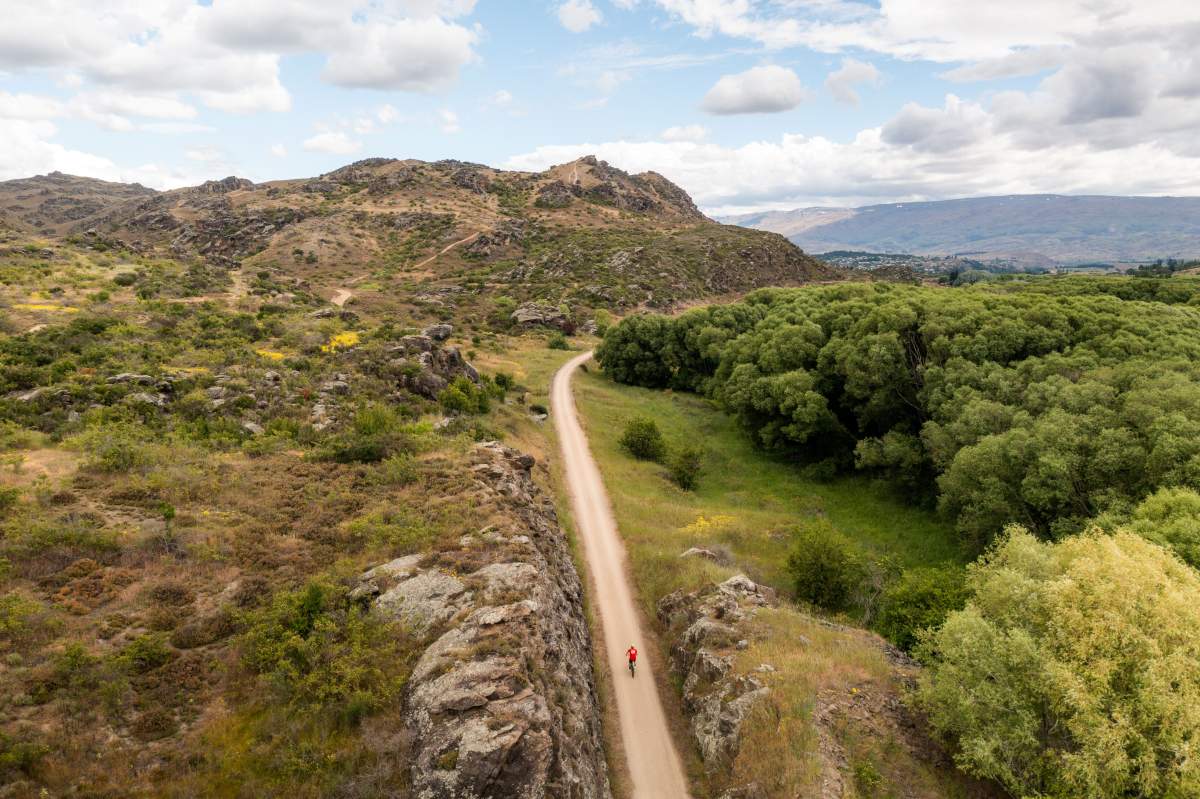
If one trail can lay claim to starting New Zealand’s modern-day love affair with cycling, its the Rail Trail.
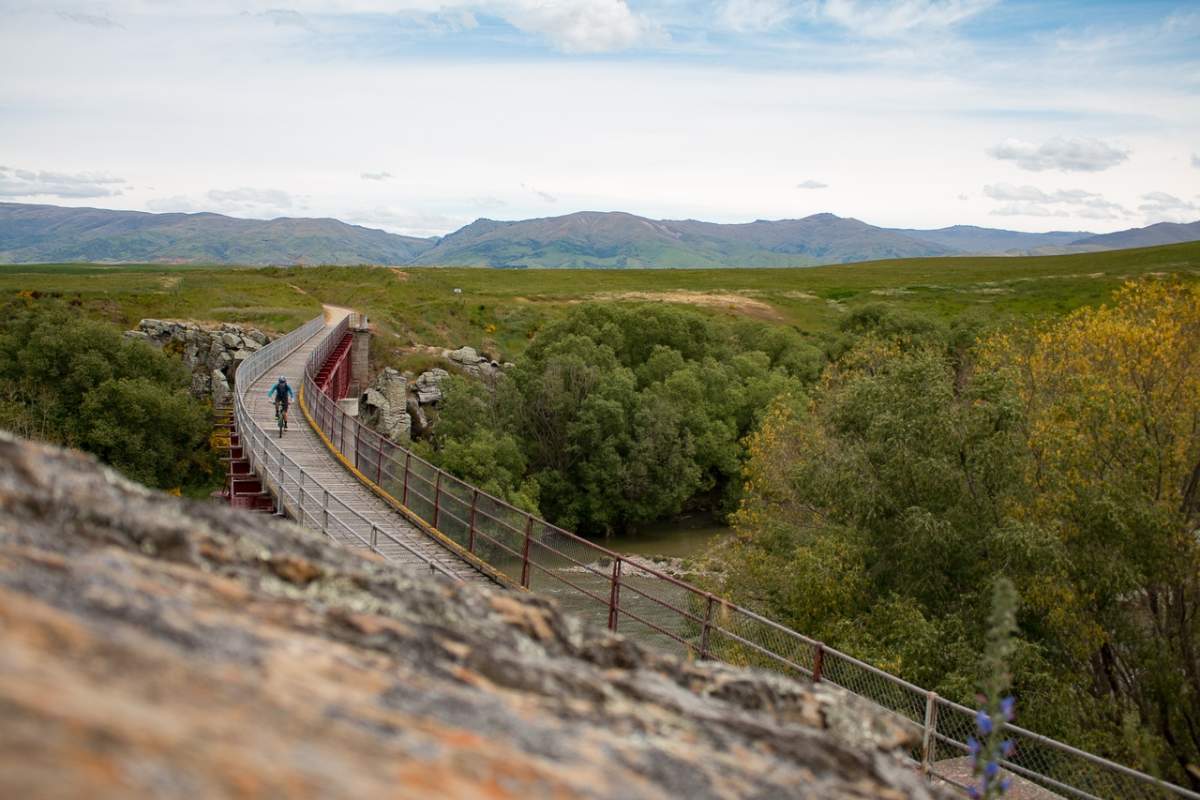
Bridges, viaducts and tunnels span the 152km journey from Clyde to Middlemarch.
Back then Neville Grubb was the owner of a small bike shop in Alexandra. He was one of the first to seize the opportunity of packaging up tours for cyclists and founded the bike tour company Trail Journeys.
“The Rail Trail was a first for New Zealand”, says Neville. “Cyclists could ride for four days in a row without going on the road. It was a whole new perspective on cycling”.
However, not everyone thought it would be successful. Graeme Duncan, a third-generation farmer from Wedderburn was one such sceptic. Graeme readily admits that he was unconvinced about the trail’s potential, but credits his son for being particularly enthusiastic having seen similar projects overseas.
“The younger ones had more foresight than I did. In my generation, nothing had really worked, particularly in the 30 years before”, recalls Graeme.
The Duncan family now operate a thriving accommodation business with purpose-built cottages right alongside the trail which passes through their high-country farm.
Graeme has changed his tune somewhat too and reckons that “the Otago Central Rail Trail has been the biggest thing for the region since the gold rush”!
Today, multi-day and off-road cycling is perhaps better known by trendier monikers such as bikepacking or gravel biking, but by whatever name you call it, the Rail Trail was doing it first and continues to be one of New Zealand’s most popular rides with an established network of trail towns and tour companies offering bike hire, shuttle services and daily baggage transfers.
Moreover, the Rail Trail has revitalised a quiet corner of the South Island, and it’s now the second-largest income earner after farming.
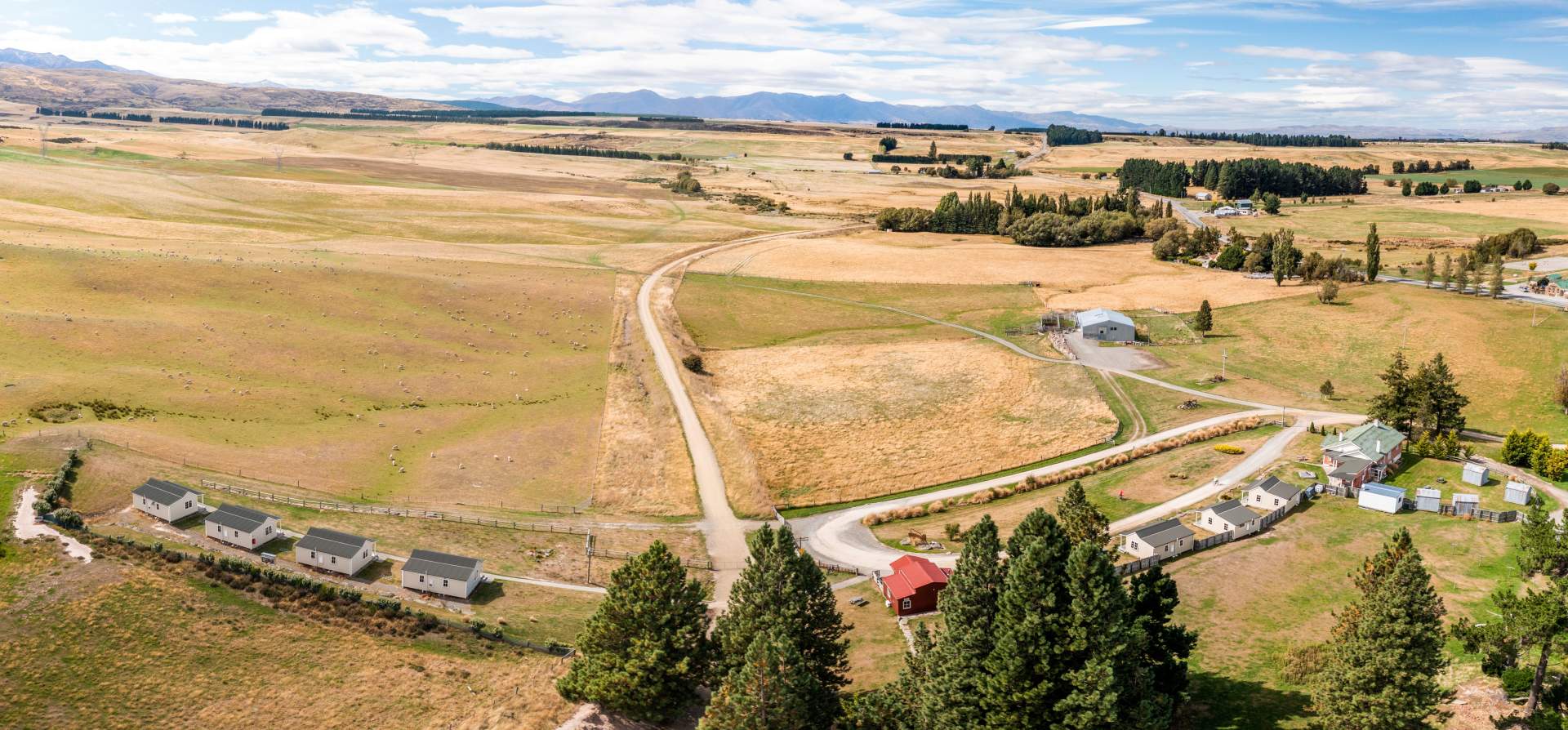
Wedderburn Cottages have been providing cyclists with accommodation and a taste of rural life since the inception of the Rail Trail.
Build it and they will come...
The success of the Rail Trail as a rural revival strategy did not go unnoticed.
In 2009 an idea emerged from the Government's Job Summit to create and build a network of cycle trails which would provide new ways for visitors to explore the country and help generate socio-economic and environmental benefits for rural communities. 'Nga Haerenga - The New Zealand Cycle Trail' was born.
The Government originally committed a $50 million fund to create a continuous touring route running the length of the country, and this funding was matched by an additional $30 million from local councils, community trusts and other organisations.
Although the ambitious plan to create a continuous bike trail the length of the country did not eventuate, more trails were conceived and constructed across New Zealand. There are now 23 Great Rides.
In Central Otago, the Rail Trail was the catalyst for two more Great Rides.
Roxburgh local, Rod Peirce, had ridden the Rail Trail with his brother. Although not much of a cyclist, Rod was inspired and thought that the Teviot Valley would benefit from its own bike trail.
Rod pressganged a handful of likely locals with a kiwi-can-do attitude into action and delivered not one but two trails in the Teviot Valley – the Roxburgh Gorge and Clutha Gold Trails. Opened in 2013, the two interconnected trails meander along the mighty Clutha Mata-au River between Alexandra and Lawrence. The Clutha Gold Trail was then further expanded by 63km in 2023 and now extends all the way from Lawrence to Waihola. The long-term goal is that a trail might one day reach Dunedin.
Surveying the route for the Roxburgh Gorge Trail was not easy [photo: Barrie Wills]
Nor was the weather always kind to the surveyors and enginners... [photo: Barrie Wills]
Murray Patterson, the current chairman of the trust which manages the Roxburgh Gorge and Clutha Gold Trails is quick to acknowledge not just the thousands of hours which volunteers commit to the trails each year, but also the local landowners.
“It’s important to recognise and acknowledge the support of all the landowners along the trails which have generously allowed access to their properties. Without their consent, there simply would be no trails”, says Murray.
Like the Rail Trail, the Teviot Valley’s two trails have provided an economic shot in the arm for local businesses as well as social benefits for the region.
“The trails encouraged a lot of locals back into biking, whilst others are out walking and running along the trail, so we’d like to think that the trail brings wellbeing benefits to the local communities. Trails are also bringing new business opportunities and economic benefits to the area”, said Murray.
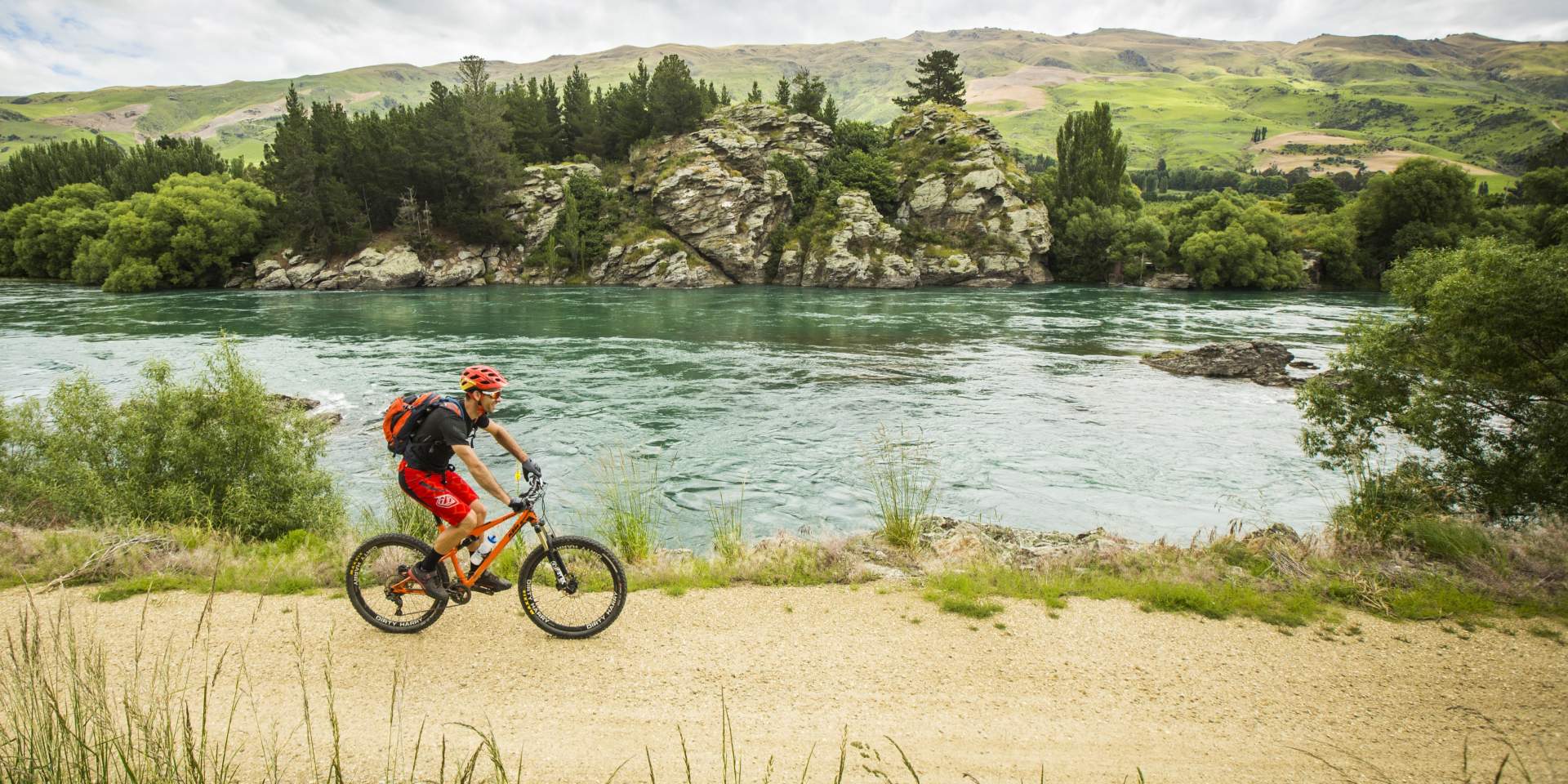
The Clutha Gold Trail now stretches for 135km between Roxburgh Dam and Waihola.
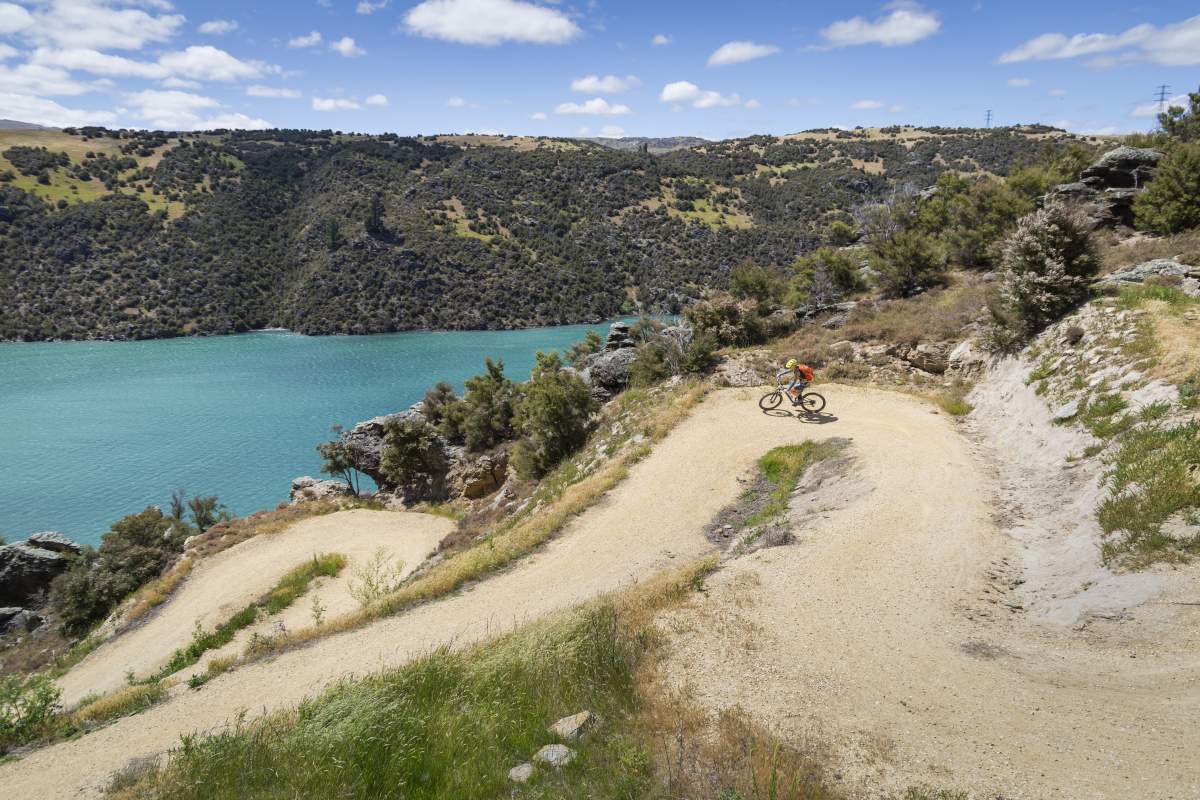
World Class: flowing switchbacks on the Roxburgh Gorge Trail
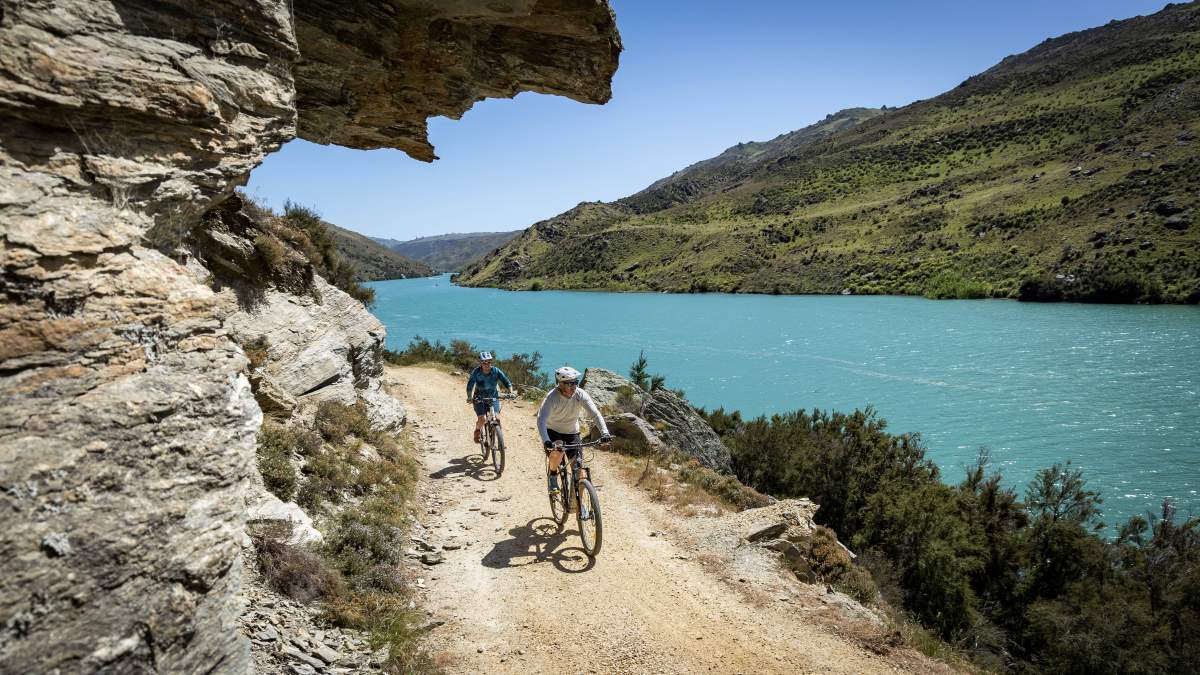
Dramatic, barren landscapes of the Roxburgh Gorge contrast to the green, lush valleys of the Clutha Gold Trail.
Meanwhile, in Queenstown...
Not to be outdone by their neighbours in Central Otago, the Wakatipu Trails Trust (WTT) - now Queenstown Trails - was established in 2002 following a community meeting to “create a world class trail network for walking and cycling.''
The Queenstown Lakes area was rapidly growing and thankfully WTT had the foresight to secure access and easements to key land for the trails network before it was fully developed. Working in close partnership with Council and the Department of Conservation, and thanks to Government funding secured via the 2009 Job Summit, the Trust was able to plan and construct over 120km of world class cycling and walking trails.
Queenstown is now regarded as a mecca for cycling, offering not just scenic trail rides but also lift-accessed, downhill mountain biking and outstanding mountain bike parks. In fact, the economic value of cycling accounts for over $150 million of spending in the resort each year. This equates to more than a third the size of the ski economy.
It’s predicted that if bike visitor spending grows according to the forecast growth, then biking could become almost 50% of the size of the ski visitor economy by 2026 (~$200+ million).
The growth of cycling – a low impact form of tourism - in the Queenstown Lakes area fits perfectly with the region’s ambitions to be a regenerative tourism destination with a carbon zero visitor economy by 2030. A vision supported by the locals who are keen advocates for active transport and cycling.
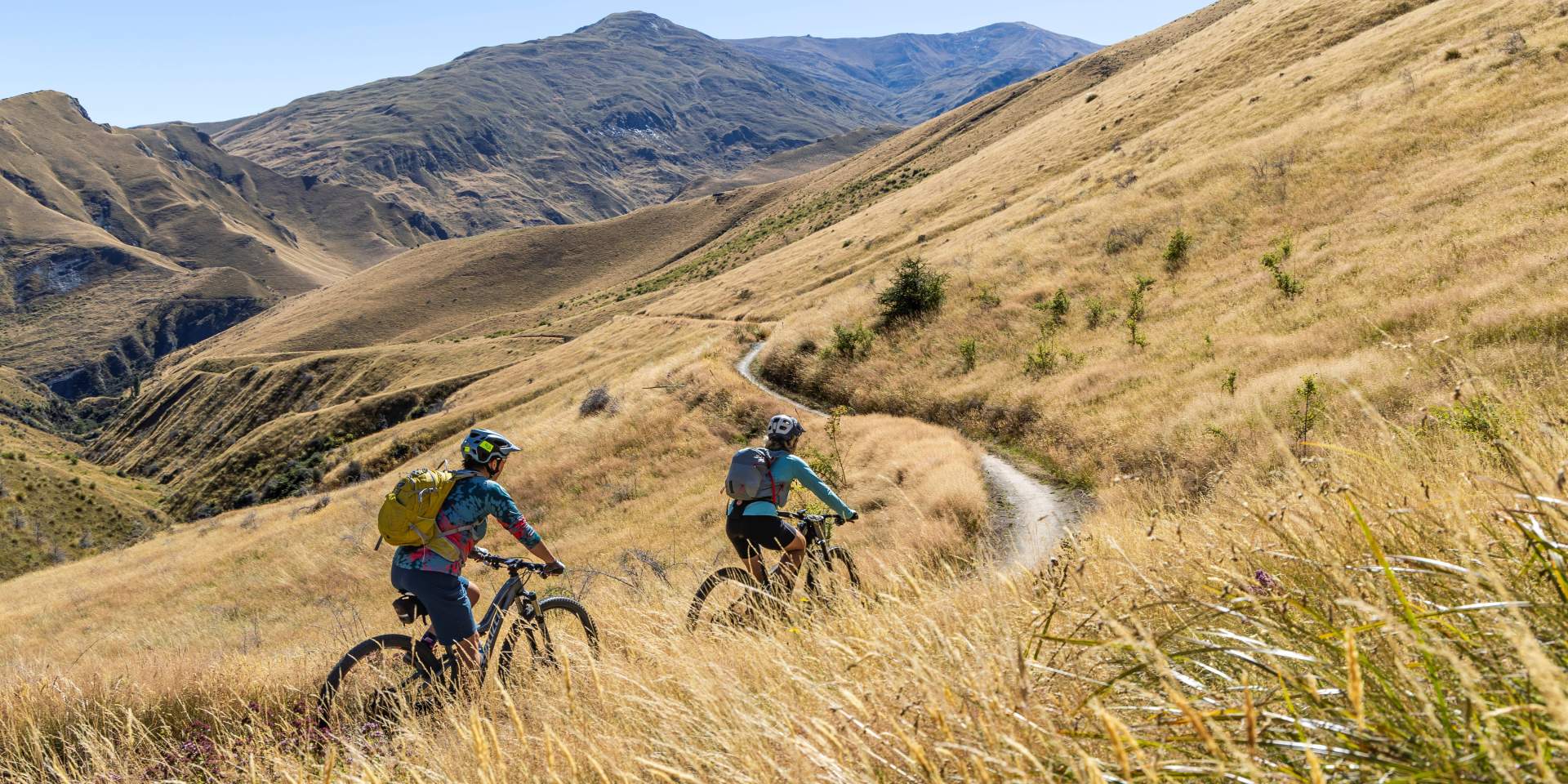
Queenstown has become a mecca for all forms of cycling. Pictured: the epic backcountry Coronet Loop trail.
Queenstown’s trail network just keeps growing and getting better. Recent additions include the epic Coronet Loop, a 50km single track backcountry adventure for experienced mountain bikers, and the Wharehuanui and Shotover Gorge Trails which have been essential links to connect Arrowtown to central Queenstown and support popular loop rides.
Mark "Willy" Williams is the CEO of Queenstown Trails Trust, and his passion for the trails is infectious, “we’re in an exciting phase of trail development in Queenstown, but also part of a growing movement towards a much bigger story of landscape restoration, enabled by access. Our trails have become a conduit for native re-forestation and predator trapping, on top of the obvious recreational and tourism benefits they bring to the community”, enthused Willy.
“Recently, our big focus has been closing the gaps in the network and bringing a trail close to home for everyone. By integrating the northern side of the Whakatipu Basin with the residential suburbs, we’ve established ‘green corridors’ to the mountain bike trails on Coronet Peak and Mahu Whenua, enabling locals to ride from home to where they want to play”, said Willy.
Whilst the economic benefit of the trail network from tourism is evident, the additional benefit of connecting communities with active transport opportunities is also an important strategic consideration for the Trust.
“Trails provide the perfect means for locals and visitors to experience the Whakatipu Basin without a reliance on vehicles, reducing emissions and congestion, with the obvious health and wellbeing benefits of daily exercise”, he said.
And as for the future? Well, watch this space, but a trail from Queenstown to Glenorchy is a project which Willy and his team are beginning to fizz about…
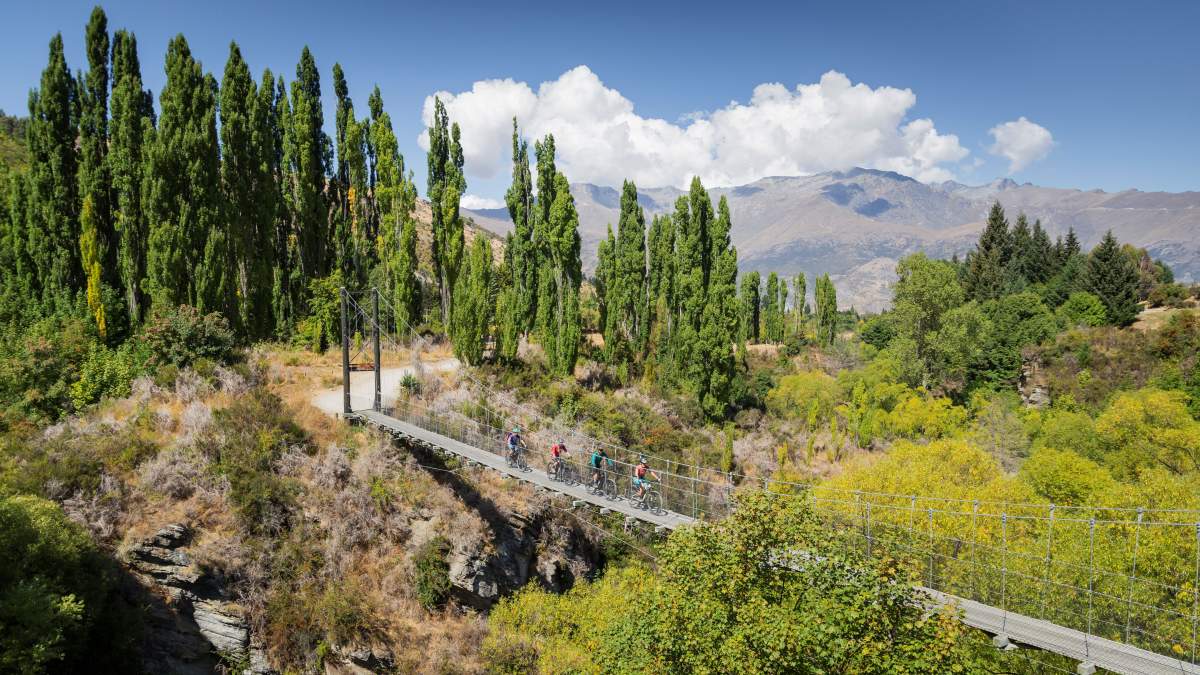
The Queenstown Trails vary in difficulty from easier trails like the Arrow River Bridges...
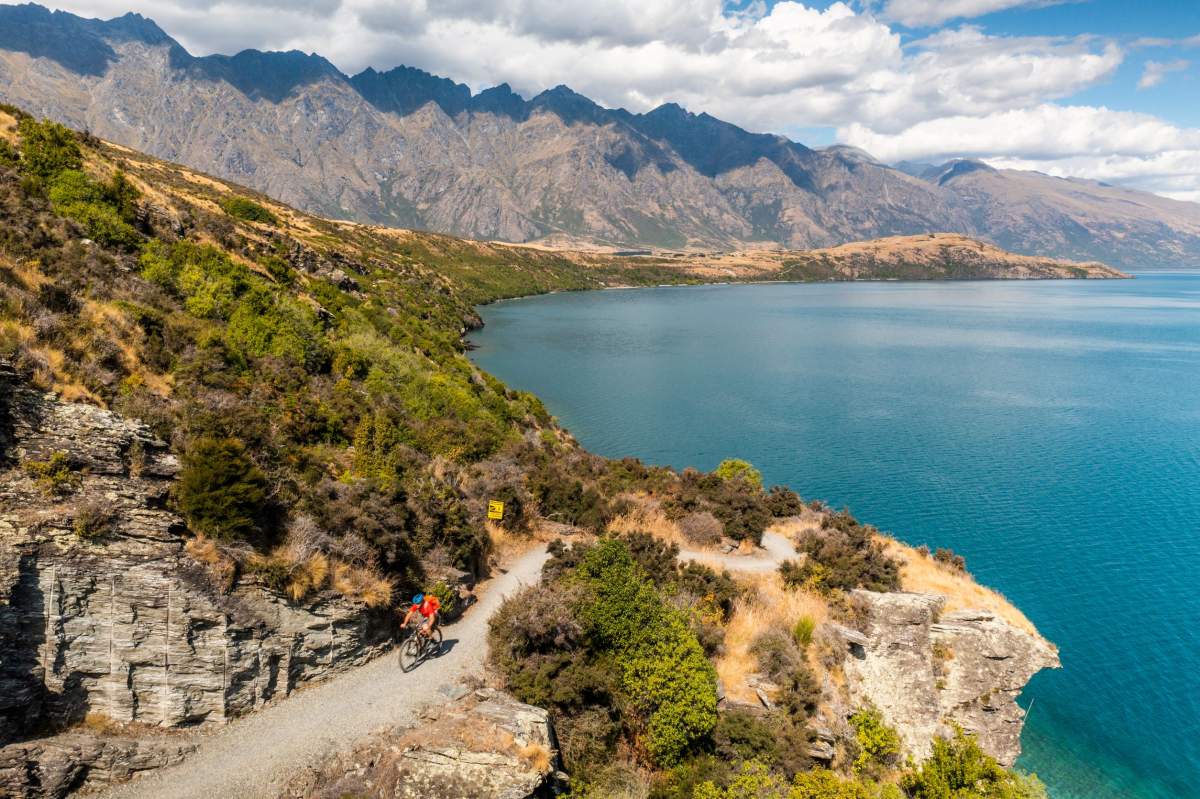
...to more challenging rides like the Jacks Point Track. But wherever you ride, the scenery is always stunning.
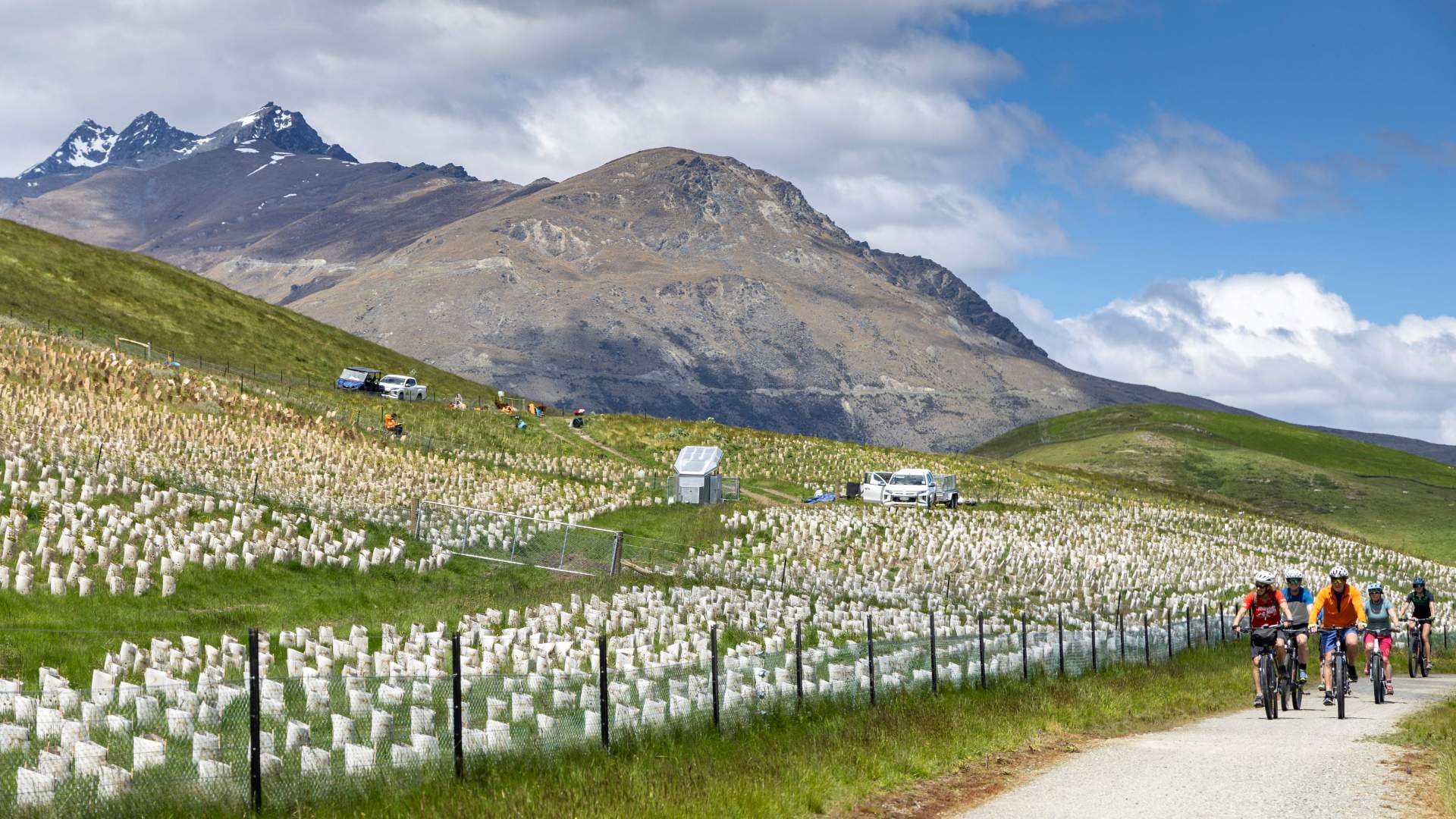
Queenstown's trails have become a conduit for native re-forestation and predator trapping.
Grand plans, connecting communities and an engineering masterclass...
In 2012, three feasibility studies were commissioned to assess the viability of a new network of recreational trails linking Queenstown, Wanaka, Cromwell and Clyde / Alexandra.
The studies confirmed the wide-reaching socio-economic benefits that creating new trails would bring. So, in 2015 a number of community groups and trusts combined, forming the Central Otago Queenstown Trails Network Trust - which was a bit of a mouthful - and is now more simply known as Southern Lakes Trails.
This new entity signed a tripartite funding agreement with Central Government, Central Lakes Trust and the Otago Community Trust, with funds totalling $26.3 million for the development of three new trails.
First up, was the development of the epic Lake Dunstan Trail to connect Cromwell and Bannockburn with Clyde from where cyclists could join the Otago Central Rail Trail to Alexandra and then either continue along the Rail Trail to Middlemarch or follow the Roxburgh Gorge Trail through the Teviot Valley.
An engineering masterpiece traversing the rugged Cromwell Gorge, the 55km long Lake Dunstan Trail has quickly become one of the country’s most popular day rides with over 250,000 riders having experienced the trail since it opened in May 2021.
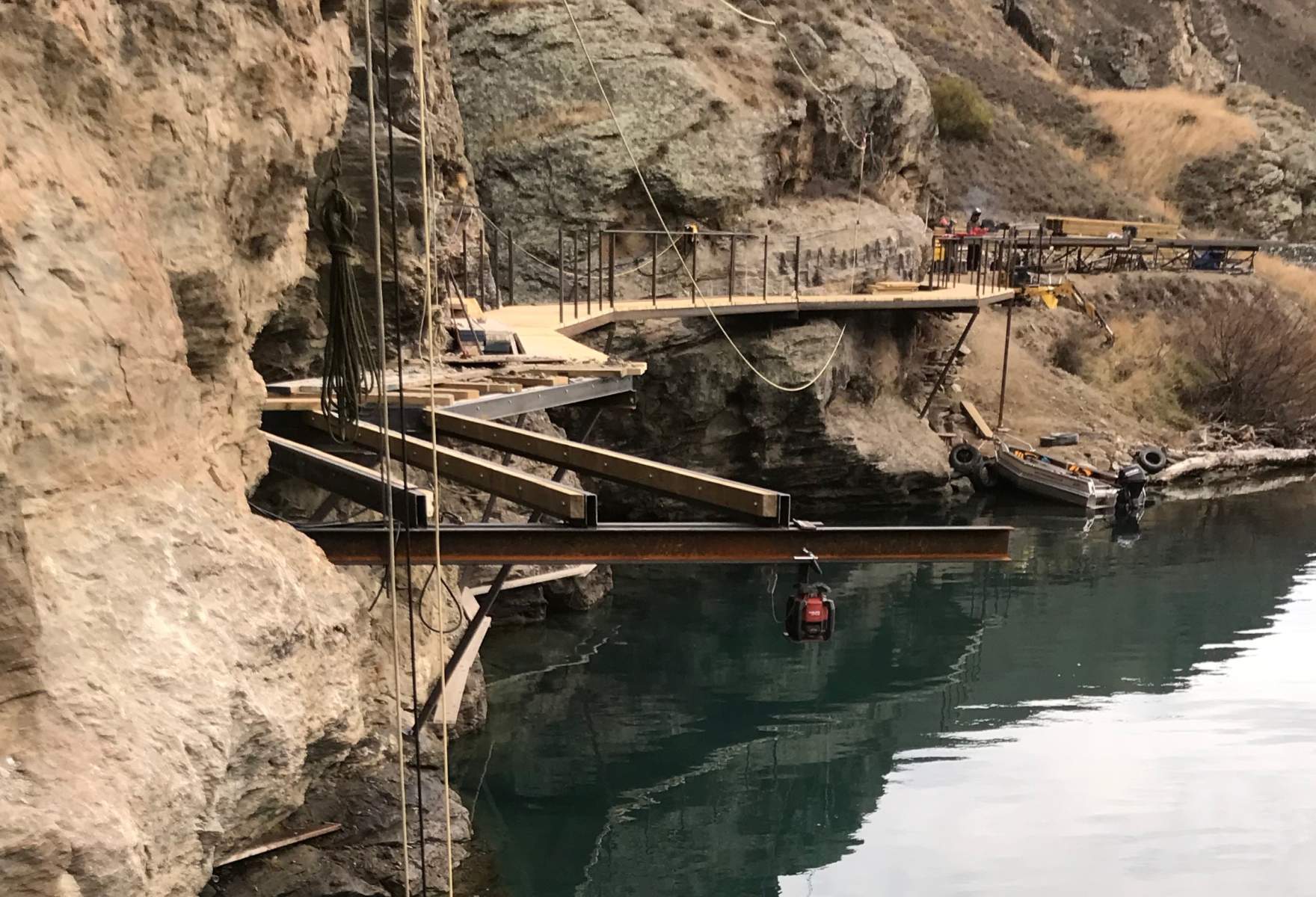
Constructing the Lake Dunstan Trail was quite the feat of enginnering.
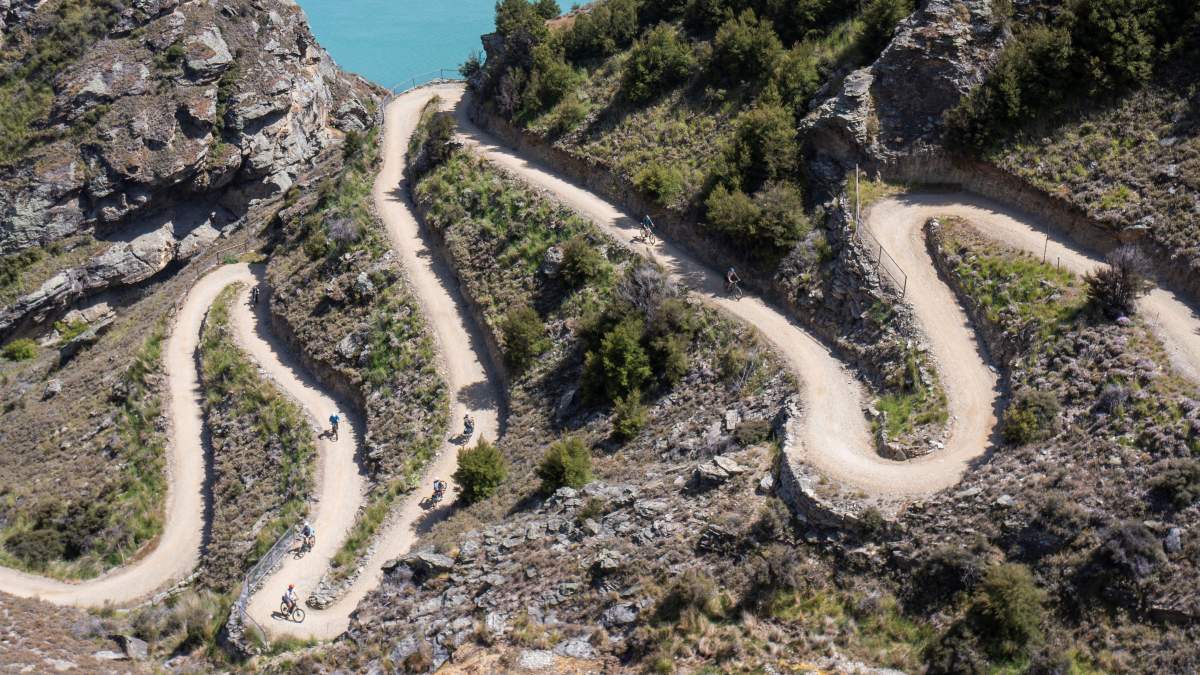
And the result? Quite extraordinary! Pictured: the Cairnmuir Ladder.

The bluff bridges are a key feature of the Lake Dunstan Trail.
With Lake Dunstan complete and duly awarded status as New Zealand’s 23rd Great Ride, Southern Lakes Trails turned its attention to another engineering challenge and how to construct a walking and cycling trail through the Kawarau Gorge between Queenstown and Bannockburn which would connect to the wider Queenstown Trails network and the Lake Dunstan Trail.
Construction of the Kawarau Gorge Trail is now well under way and is on track to open in the summer of 2025 / 2026. It promises to be both another spectacular ride, but also a game-changing piece of infrastructure which completes a 500+ kilometre network of off-road trails that will extend uninterrupted, on immaculate gravel, from Queenstown in the heart of the Southern Alps to Waihola on the east coast, just south of Dunedin.
Undeterred by over a decade of endless planning, fundraising, maintenance and negotiations with landowners and Government, Southern Lakes Trails has recently confirmed it will imminently commence work to bridge the 12km “gap” between Doctor’s Point and Shingle Creek on the Roxburgh Gorge Trail. The trust is also very close to starting work on the highly anticipated Wanaka Link Trail which will integrate Wanaka with the wider Otago trails network via a track following the Clutha River from Albert Town to meet the Lake Dunstan Trail at its current terminus in Smiths Way north of Pisa Moorings and Cromwell.
And after that?...
“Retirement!”, exclaims Janeen Wood, CEO of Southern Lakes Trails.
“Seriously though” continues Janeen, “there’s an opportunity to look at the broader vision for all the lower South Island, which could integrate fully into Dunedin, Southland and up to the Alps to Ocean Great Ride in Waitaki. What a sustainable tourism asset this would be! Imagine providing our communities with the ability to connect different styles of biking tracks, mountain bike tracks, downhill, BMX, gravel biking…. What a varied destination and incredible asset that would be for the South.”
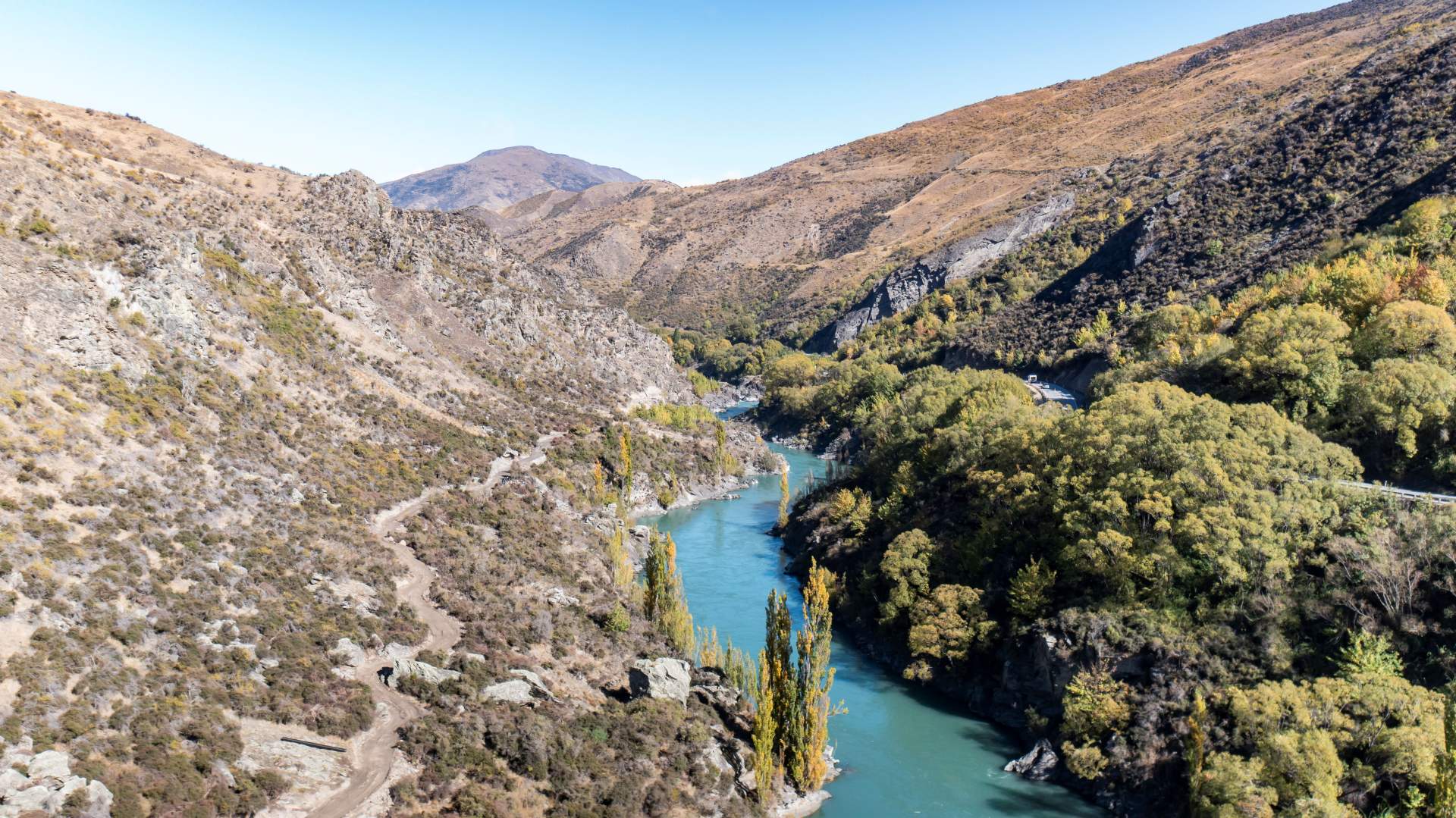
The Kawarau Gorge Trail is currently under construction and will link Queenstown's trails to the Lake Dunstan Trail and wider Central Otago.
Maintaining the unpaved paradise - a constant battle...
Whilst Otago’s predominantly dry climate makes it ideal for riding, extreme weather events do occasionally cause significant trail damage. And, whilst the growth in e-biking has opened up the trails to a wider demographic, e-bikes are heavier and more powerful than standard bicycles which results in additional wear and tear on the trails which require constant, ongoing maintenance.
Alas, trail maintenance is not cheap and it's a common misconception that the trails are maintained and funded by ratepayers. Whilst the Council in Queenstown does help with trail maintenance, this is an exception and the other trail trusts rely on donations and fundraising.
Through Central Government, the Ngā Haerenga New Zealand Cycle Trails Fund provides baseline funding to maintain and enhance the quality of the Great Rides. However, Government funding applications require any financial support to be matched by the individual trail trusts which rely heavily on backing from other sources such as community trusts, local Government grants, public donations and partner programmes with tourism businesses which operate along the trails.
The community and charitable trusts which maintain the Great Rides also rely on countless hours of volunteer work but, notwithstanding the hard graft of their volunteers, the trails – which are free for everyone to use - do not run on fresh air!
The trail trusts depend on donations which contribute to maintaining and extending the trail networks. So, if you’ve ridden and enjoyed Otago’s unpaved paradise and would like to donate, please click below to support your favourite trail... because as Joni sang:
“Don't it always seem to go,
That you don't know what you've got 'til it's gone”…

Related Stories
-

Reclaiming Wild
Two gutsy girls on an epic bikepacking mission to celebrate their 50th birthdays.
Read more about Reclaiming Wild -

In Pictures - The Shotover Gorge Trail
Images of the new Kimi-ākau | Shotover Gorge Trail in Queenstown
Read more about In Pictures - The Shotover Gorge Trail -

RIDE! Don't Drive
6 Reasons why riding a bike is the best way to explore Otago, New Zealand.
Read more about RIDE! Don't Drive -

Best Bakeries in Otago
From cinnamon scrolls to cheese rolls - a guide to the best trailside bakeries in Otago.
Read more about Best Bakeries in Otago -

25 Years On Track
The old and the new - celebrating 25 years of the Otago Central Rail Trail
Read more about 25 Years On Track -

Neat Trail Places
An insider's guide to the neatest places along Central Otago's bike trails.
Read more about Neat Trail Places



